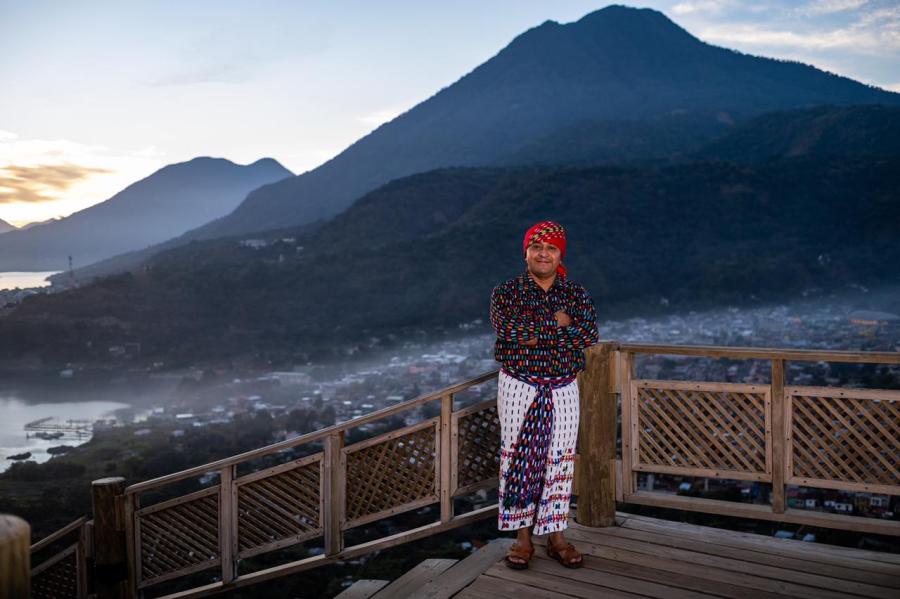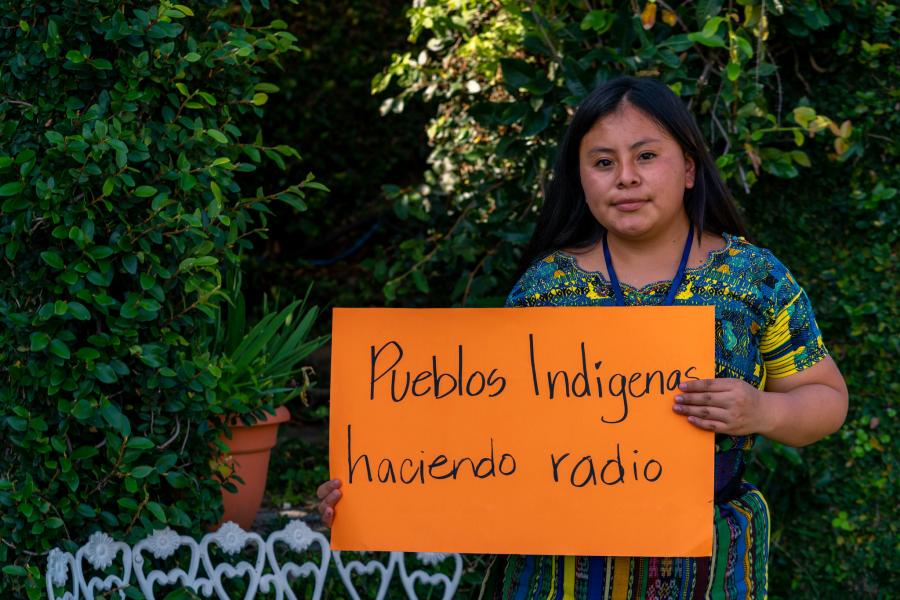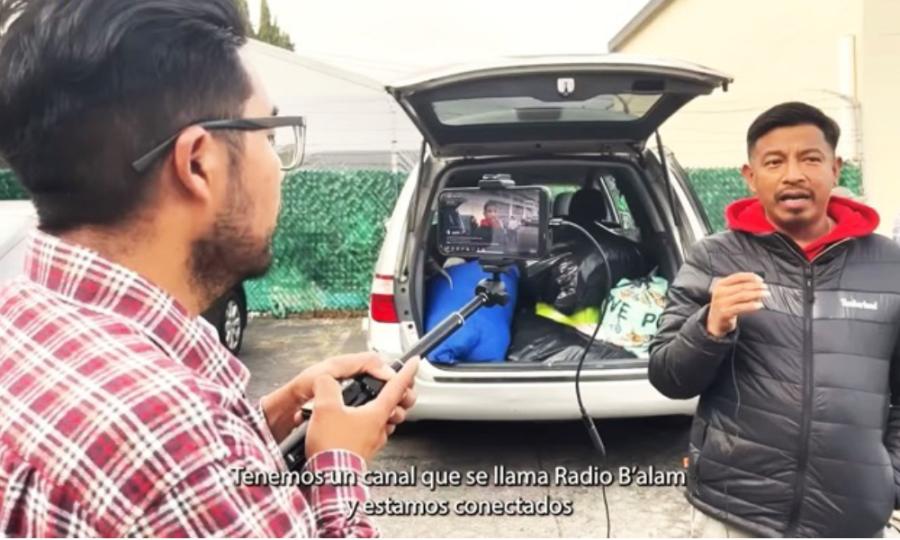Between 1978 and 1984 the western highlands of Guatemala became a "killing field." It was there that the Guatemalan army waged a rural counterinsurgency operation against not only a small, armed guerrilla force, but also against a large unarmed, civilian, and mostly Mayan population (Falls, 1994). It was the most extensive attack on the highland indigenous people since the time of the Spanish invasion five centuries earlier. By the Guatemalan military's own admission, it destroyed over 440 rural communities in the highlands and partially razed countless others. Tens of thousands of people were killed or disappeared (a Guatemalan euphemism for dead). Another one million people-approximately half the rural population-were displaced with the country for some period of time, while tens of thousands of men, women, and children fled across the Mexican border to live in exile. No one knows for sure how many widows and orphans there are in Guatemala as a direct result of the political violence, but the estimates range from 40,000 to 80,000 widows and 150,000 to 250,000 children who have lost at least one parent. The Guatemalan state became an international pariah for the magnitude and brutality of its human rights violations.
Although democratic elections have taken place twice since 1985 and three successive civilians have assumed the presidential office, ample evidence suggests the military remains firmly entrenched in power. And human rights abuses persist. Even with the signing of a UN-mediated human rights accord in March 1994 between the Guatemalan government and the URNG (Guatemalan National Revolutionary Unity, a leftist guerrilla umbrella organization), state-sanctioned repression against members of civil society continues with impunity. While the civil war may have ostensibly ended in 1985, a decade later fear and terror pervade daily life for many Guatemalans.
One of the notable "side effects" of the massive rural destruction caused by the war has been the restructuring of community social relations in the rural areas throughout the militarization of daily life. And one of the more pernicious mechanisms of social control instituted by the army has been the formation of civil patrols, a continuing mandatory system of community self-surveillance which began in 1982 (America's Watch 1986). Not only have the civil patrols provided vigilance and control over local communities as conduits for the army, recent evidence resulting from the exhumations of several clandestine cemeteries in the altiplano (the highlands) has implicated some of the patrollers as perpetrators of heinous crimes against other community members. The civil patrol system, in tandem with the military strategy of the forced removal of young Mayan boys (14 years old and upward) from their communities to serve as the foot soldiers in the army, implicates indigenous men as accomplices to the violence and brutality against their own people (Aguayo 1983). It is this lethal turning of Maya against Maya that is perhaps the most insidilous and disturbing aspect of state-sponsored violence in Guatemala. This sophisticated strategy of domination involves Mayas as collaborators of state terror and human rights violations. In recent years widows from some of these communities have asserted that it has been their sons in particular who have been singled out for forced recruitment.
Many of these young men return home to their villages after they are released from military duty. Yet, their reintegration into the community is often difficult and problematic. As one young man described it to me, "Soldiers are trained to kill and nothing more." Another said he learned (in the army) to hate everyone including himself. As one villager noted, "They (the men/boys) leave as Indians." These young men often go on to become the local military commissioners, heads of the civil patrol, or paid informers for the army. Many are demoralized, frequently drinking and turning violent. Others marry and settle in their villages to resume their lives as best they can.
I met several widows whose sons had been in the military when their husbands had been killed by the army. In one disturbing situation, I interviewed a woman who described the particularly gruesome death of her husband at the hands of the army, while behind her on the wall was the photograph of her son in a Kaibil uniform. The Kaibiles are the elite special forces troops of the Guatemalan army. When I asked about her son, she acknowledged his occasional presence in the household and said nothing more. On a purely objective level, it would have been dangerous to talk about such things with a stranger. Perhaps she thought her son's photograph might provide protection in the future. And how is it that a mother might be able to imagine that her son (the soldier) would perform the same brutish acts as those used against her and her family? It is precisely these paradoxes vis-à-vis the division of family loyalties that becomes instrumental in perpetuating fear and terror in rural Guatemala and crucial to understanding the ongoing ethnocide against the Mayan people. The destruction of community and its reorganization under the aegis of state terror are among the less obvious, but more decisive consequences of an ongoing low-intensity conflict perpetuated under the dual guise of a negotiated settlement to war and a fledgling democracy. The Mayan people have maintained a tie to community as a resource of their resistance against outside domination for five centuries. What is different in the present situation is the degree of state penetration into community social organization and cultural practices. And as a result of these new arrangements a sense of trust among community members has been severely undermined.
Reworking Community
[In the highlands after the massacres], we watched the widows: how many there were, how they obtained their food, who gave them food, and where the orphans were [located], and who took care of them [in order to determine who and where the subversives were]. (J. Schemer interview with former Defense Minister General Alejandro Gramajo, 1993).
A collective and individual sense of insecurity permeates much of community social life in the towns and villages of the altiplano today. Mayan women widowed as a result of the political violence are among the most vulnerable, economically and socially, as well as suspect by the military authorities. More than a decade after the "scorched earth campaign" the women I know continue to recount their stories of the events surrounding the deaths or disappearances of their husbands, fathers, sons, uncles, and cousins. Their quiet, dignified manner belies their experiences of fear and repression and the chronic state of physical, emotional, and social trauma in which they live. Many of these women were forced to evacuate their villages in the early 1980s, as they themselves were beaten, raped and humiliated by the soldiers. Some fled to the mountains with other village members, while others sought the relative safety in nearby towns and still others chose the anonymity of Guatemala City. Understanding the present situation of these women illustrates, I believe, the complexity of the circumstances in which many Guatemalans are struggling to survive in the aftermath of a civil war and ongoing terror. That is, they are both victims of war, violence, militarization, and relentless exploitation and they are among its survivors. By this I mean that Mayan widows not only escaped death during a brutal reign of terror, but that they are reworking their lives in ways that accommodate, subvert, and contest a lived reality not of their own making.
By 1984 many people began to repopulate their communities and to rebuilt their lives as best they could under the watchful eye of the military. The war had a devastating effect on the local economy, leaving many people in precarious circumstances. Villagers found themselves more deeply entrenched in poverty, hunger, and misery. In many communities the economic situation was far worse in the early 1990s than it had been ten to fifteen years earlier, marked by increased land concentration and landlessness, a relentless search for wage labor, and a significant reduction in consumption due to lower incomes (Smith 1990). During the violence many people lost most of their possessions, their homes were destroyed, their animals killed, and they were unable to plant their crops for several years.
Women heading household alone re particularly vulnerable. In the altiplano the rural economy is based on a gendered division of labor. Men work as campesinos and as wage laborers. They are primarily responsible for milpa production (the small family-owned plots of land where a combination of corn, beans, and squash are cultivated) and earning the much needed cash. Married women's obligations are multiple, yet their focus is circumscribed by domestic responsibilities of childrearing, weaving, raising of small animals, and petty trading in the local markets. For widows without the access to male labor, the economic situation at the household level is extremely precarious. The women need money to survive, yet they have very limited recourse to cash. Most of the women do not speak Spanish, only their Mayan language. Typically a widow's needs for male labor would have been absorbed by other family members in the community; however, under the present circumstances women's access to such resources are severely curtailed due to the number of women heading households. In some villages it is not just a few families affected by the violence, but 15-20% of all households. While many widows have a degree of power and independence not available to them as married women, they remain at the economic margins of entrenched poverty.
Outside economic assistance after the war came in the form of development aid. The initial relief projects distributed tools, seeds, pots, blankets, tins roofs, along with food. A number of these projects were targeted specifically for widows and their children. Small scale development projects became integral in women's strategies for survival. One such government-sponsored project highlights some of the political and economic contradictions inherent in this type of assistance. PAVYH (A Program of assistance for widowed and orphaned victims of the violence) was a special project mandated by the Guatemalan Congress which in 1987 appropriated 10m quetzales (approximately US $3.5m) to assist widows and their children. The project consider of three phases. The first was a census about each widow-who she is, where she lives, her age, literacy, how her husband was killed or disappeared, is there evidence to substantiate the claim, what kind of work does she do, does she own her own house, is she in debt, what was the name of her husband, and the names and ages of her children. The data gathered was entered into the state computer system in Guatemala City. The second phase consisted of six food distributions, which occurred every fifteen days for three months-10 lbs. of corn, lbs. powered milk, and 1 liter of oil per family. To be eligible to receive the food, the widow had to first answer the census questions. The third phase was the initiation of specific projects in each village that applied. They included projects such as a one-time distribution of tin roofs, a treadle sewing machine (one per village), or the initial capital for the widows to run a small store. In many villages the third phase of the program was never instituted despite innumerable trips to the regional offices by the widows requesting aid. PAVYH is now defunct.
Not all development projects are as problematic nor as sinister as the PAVYH program. In fact many of the NGO (non government organization) projects have provided important assistance for rural widows with few alternatives, yet economic and cultural contradictions of such aid are important to note. Most of the development projects organized women into groups at the village level and appointed a community representative for expediency, most often a woman who spoke some Spanish. In many cases this fact alone has created divisions with the groups as well as divisions within the community, simply because issues of local power and access to resources were not taken into consideration by the outside project coordinator. Because the women did not have a say in who was chosen to represent them, they feel they do not have an authentic voice in the project. And while the projects may provide a modicum of material assistance, they further undermine already fragile social relations at the local level.
Most development projects attempt to utilize and intergrate women's domestic skills as part of their economic strategy. Backstrap weaving projects proliferated in the late 1980s and became one of the most popular low-cost development interventions to aid Mayan widows. The use of weaving as an economic strategy appears at first glance a pragmatic response to an intractable situation. Yet, upon closer inspection this strategy creates other dilemmas. The centuries-old art of cloth produced by Mayan women on the traditional backstrap loom is transformed into piecemeal work. The strips of cloth are "mass-produced" by hand with colors and designs dictated by the project managers and are made into totes, napkins and purses to be sold on the international market hungry for folkart. Moreover, the women are unable to earn a living wage from their labor-intensive work. In 1990 the women were earning $12-15 per month, which represented the major part of their income. The money does not accumulate. In fact when one adds up the costs in time and materials the women are actually losing money. The benefit of participation is the regular circulation of cash as it moves in and out of the household. That fact was not lost on many women no longer participating in the projects, saying "it was not worth it." Others, who continue to participate, do so "out of need" or to "fight for the well being of the children."
Yet, women are reasserting control in small and myriad ways and (re)forming groups in their communities. In terms of cloth production some of the widows have started to organize local buying and selling groups without project affiliation. The women, in one instance, are pooling their money to buy thread together in large quantities in Guatemala City where the prices are cheaper. Others are looking for local markets for their products and making items in the old styles and colors that might be appealing both to tourists and other Mayas. Additionally, these groups provide a space where women can address some of their social problems. It is here can pool their labor resources as well as share their pain and suffering. In this way the local groups serve to connect women to each other through their hardships that provide a mechanism for social commentary and political consciousness. A number of these women have become members of the National Coordination of Widows (CONAVIGUA) that seeks a collective sense f rights, not only for women and their children, but for the rights of all Mayan people and the poor and disenfranchised in Guatemala. From this emerged a new sense of identity for many Mayan women alone, and in some cases a gendered and political consciousness. And it is here in these spaces of community rebuilding that a significant challenge to power lies.
Article copyright Cultural Survival, Inc.



